Watts Towers - Sabato (Simon, Sam) Rodia
Artist-built Environment | Mosaic environment | Visible from the street


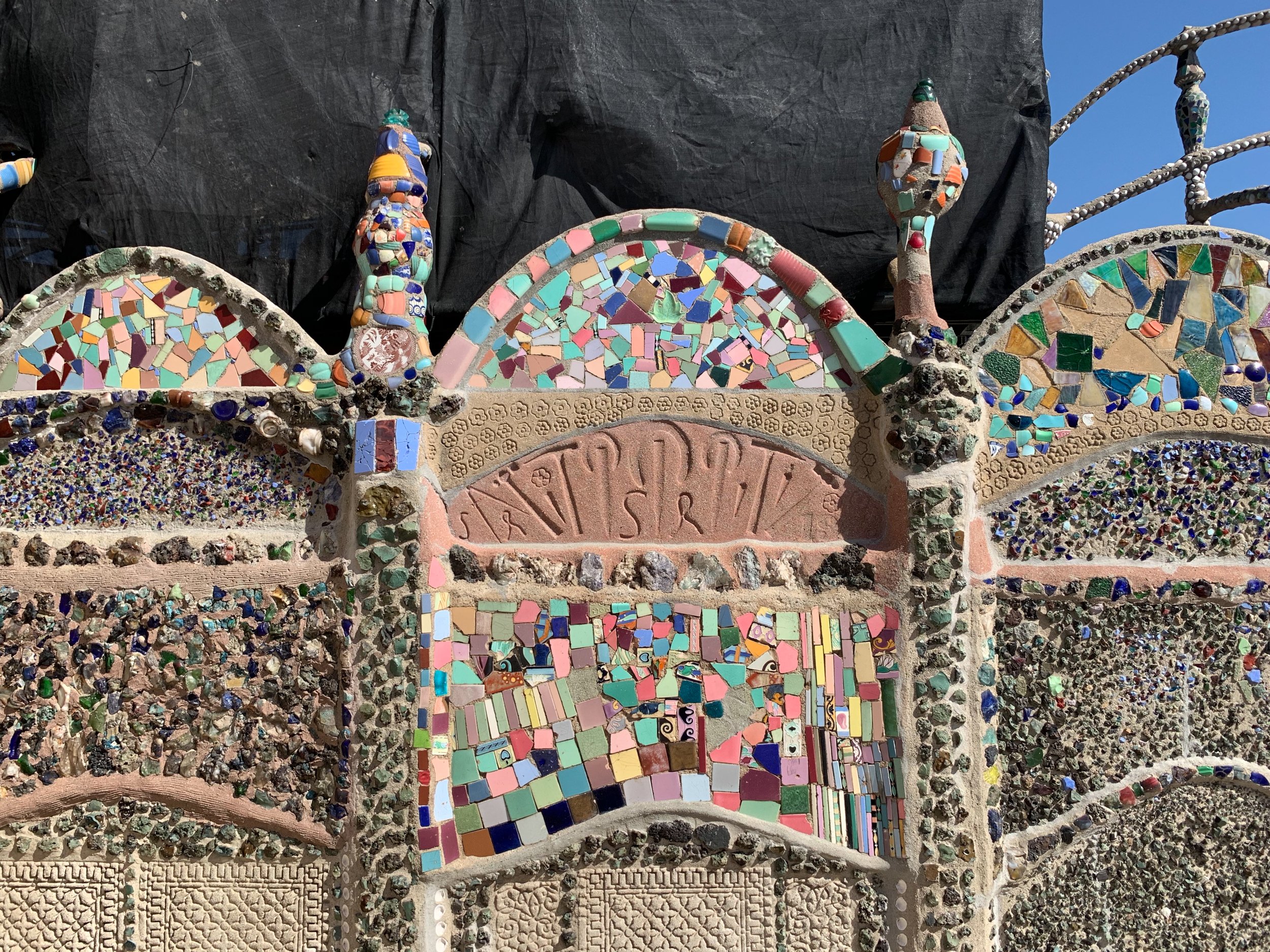
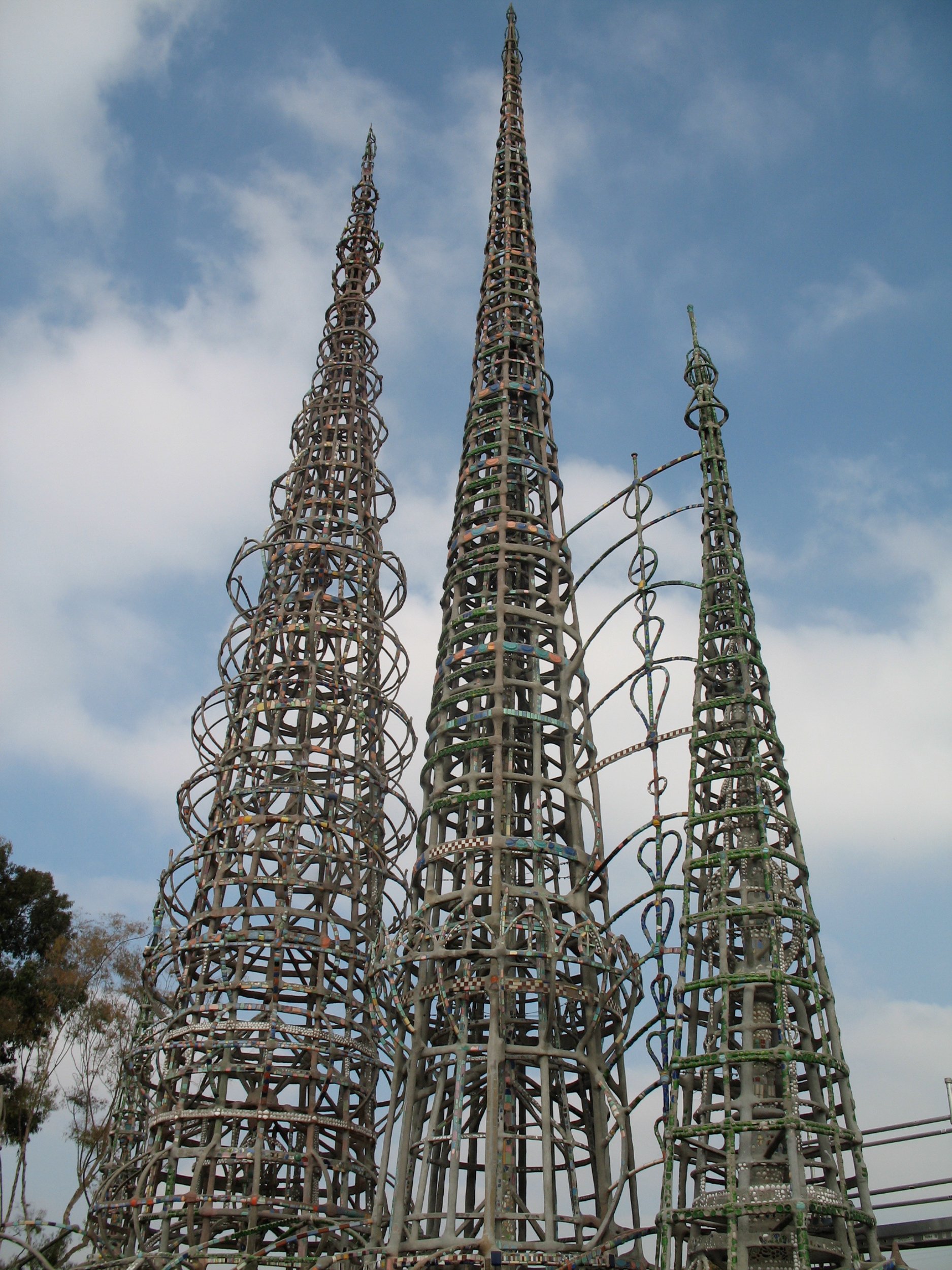
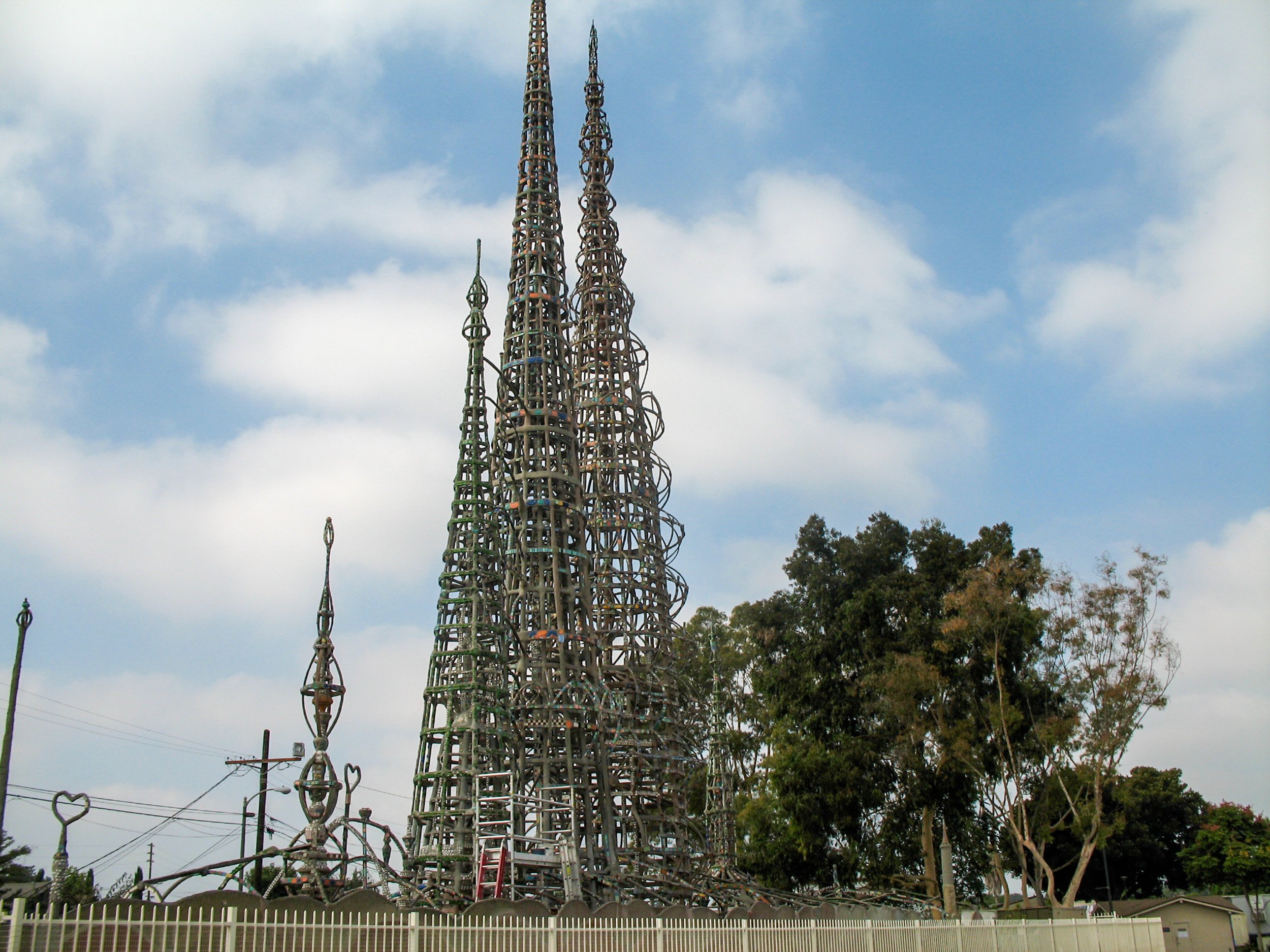
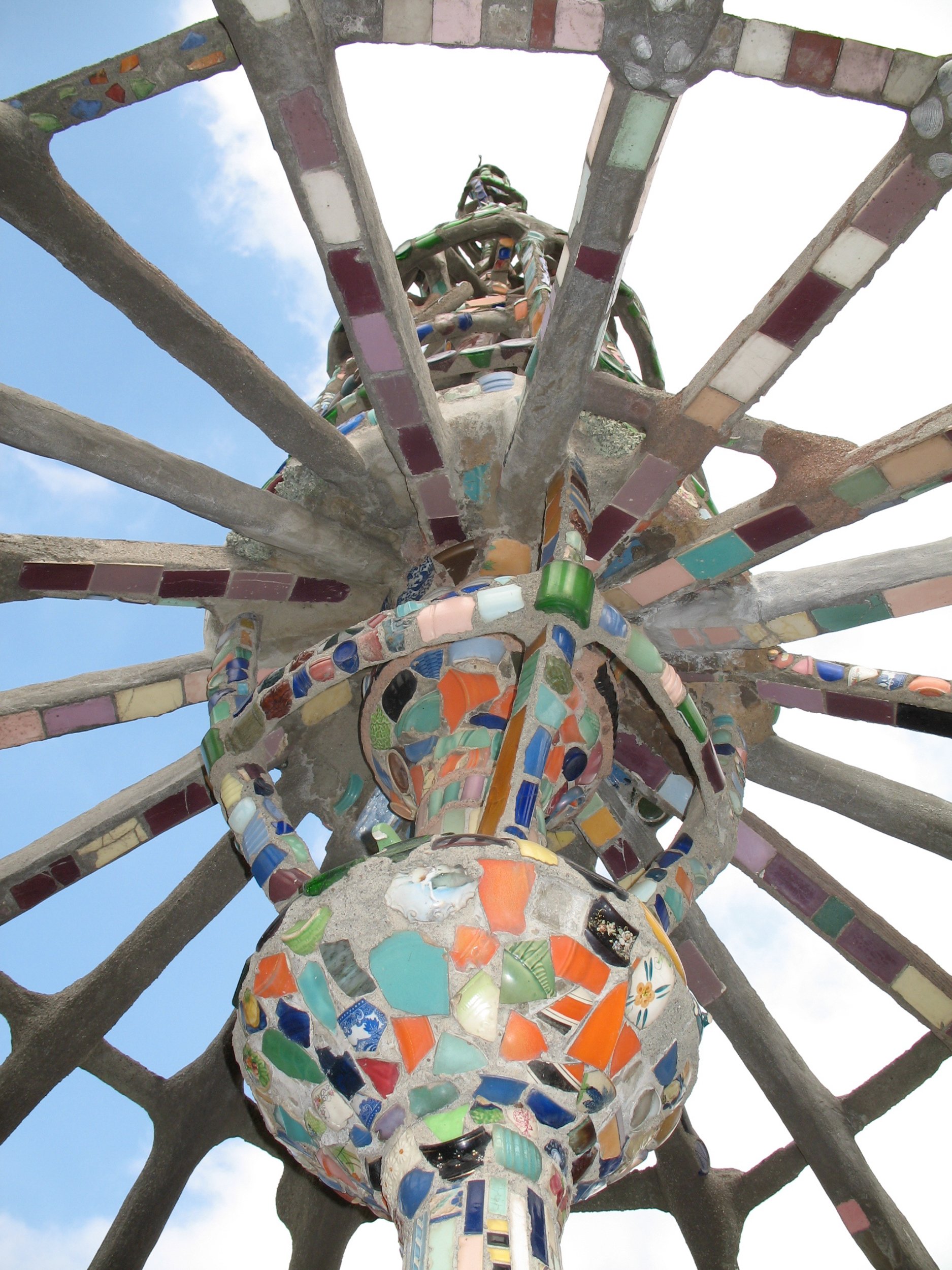
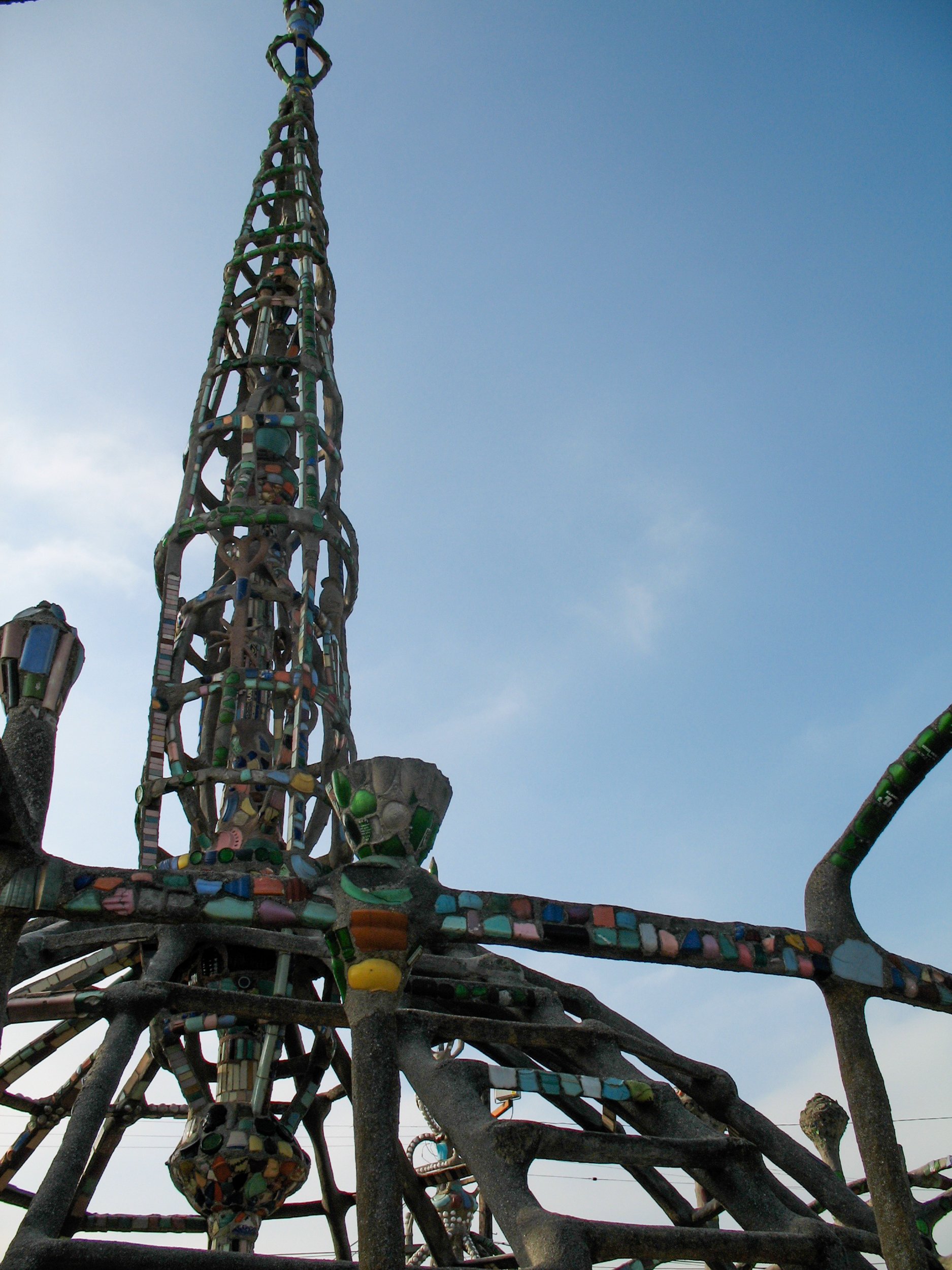
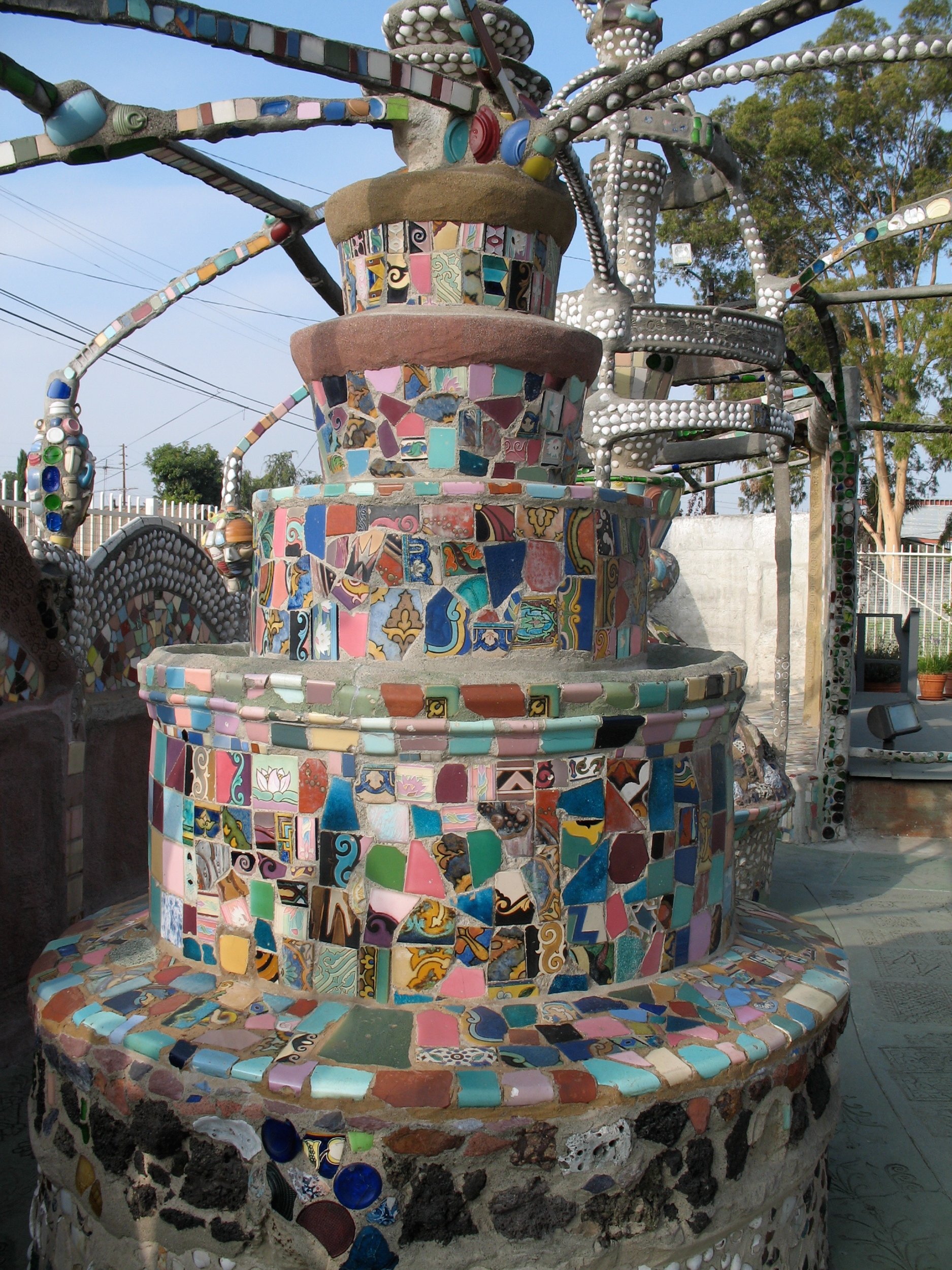
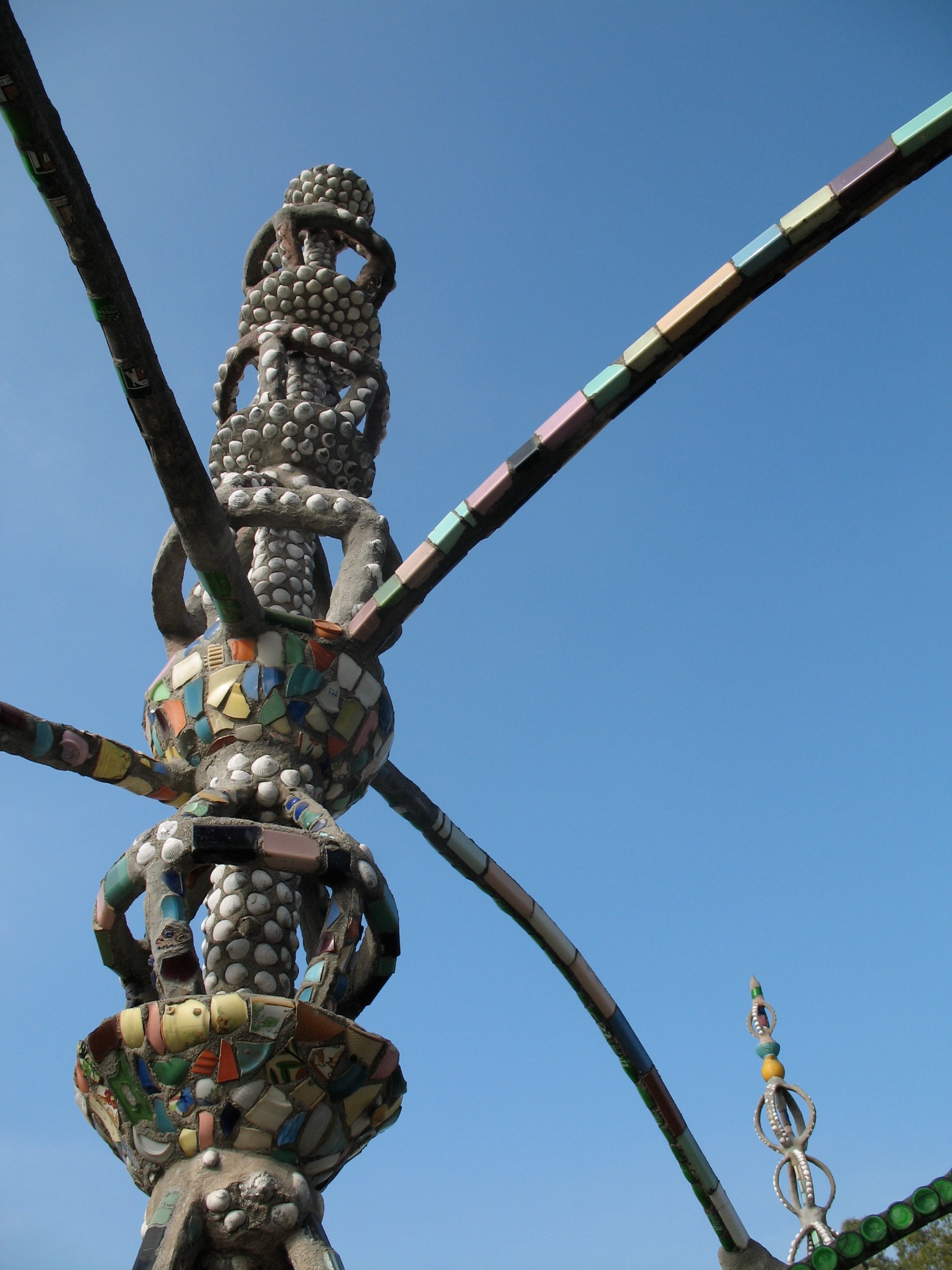
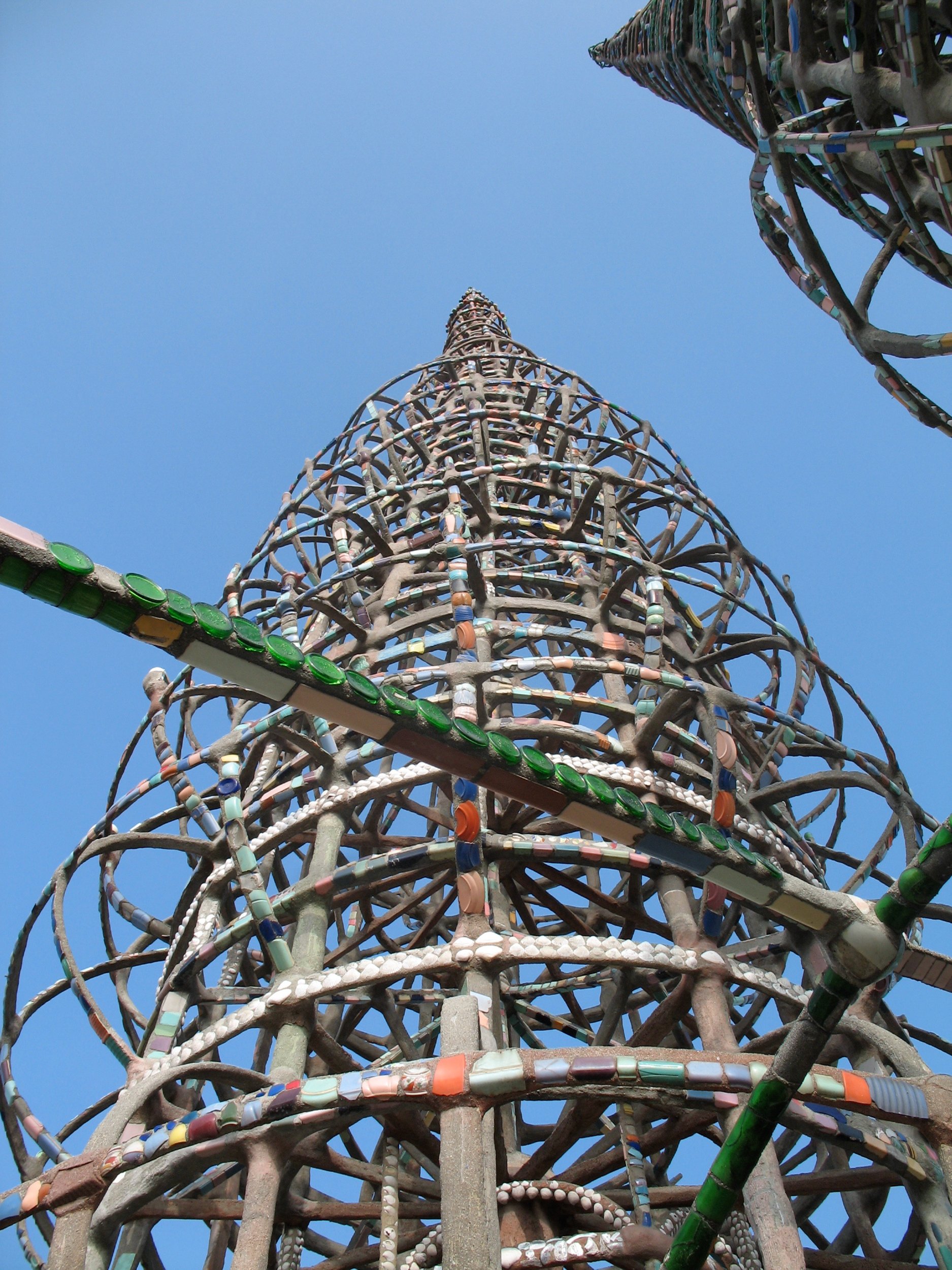
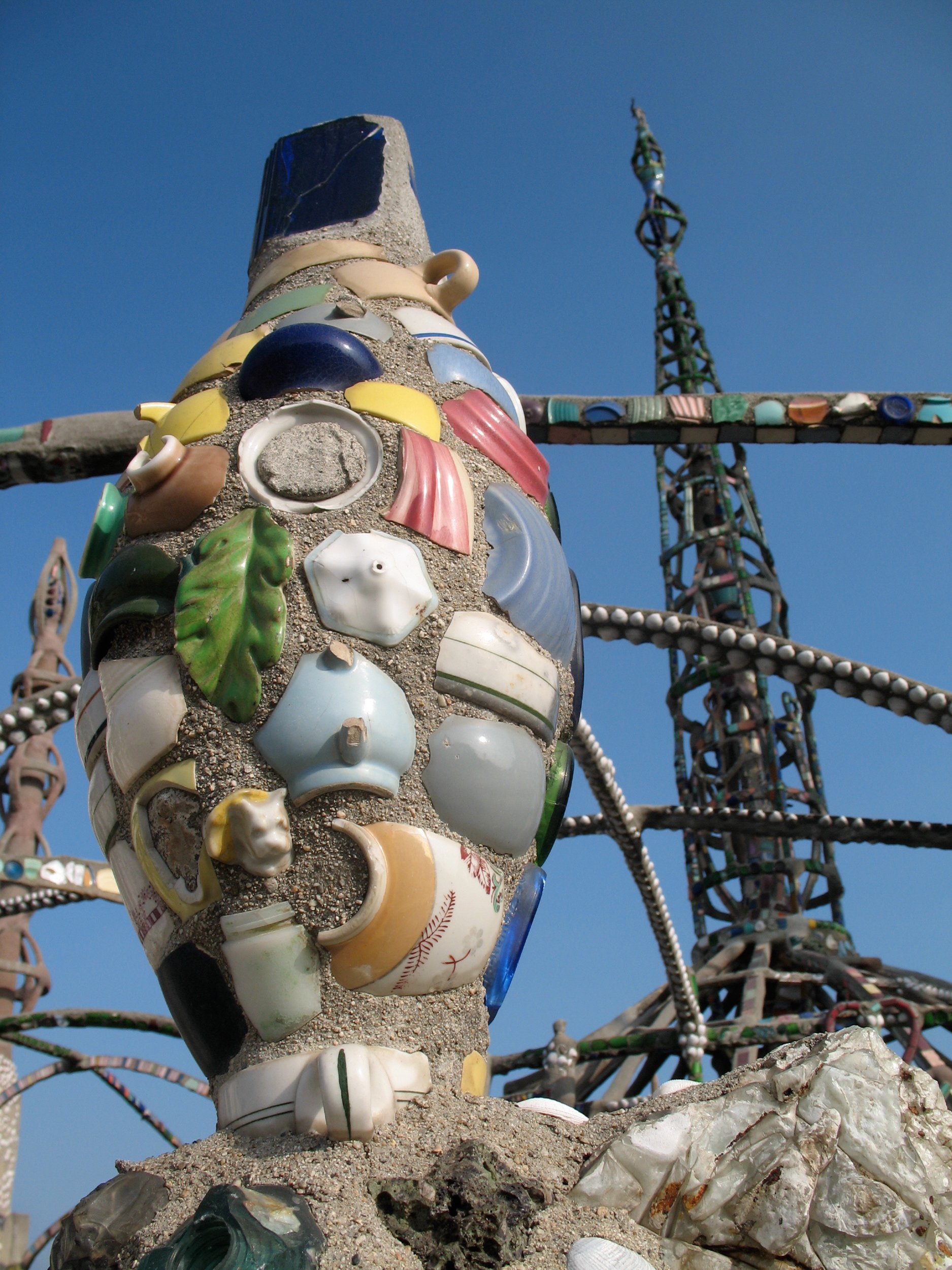

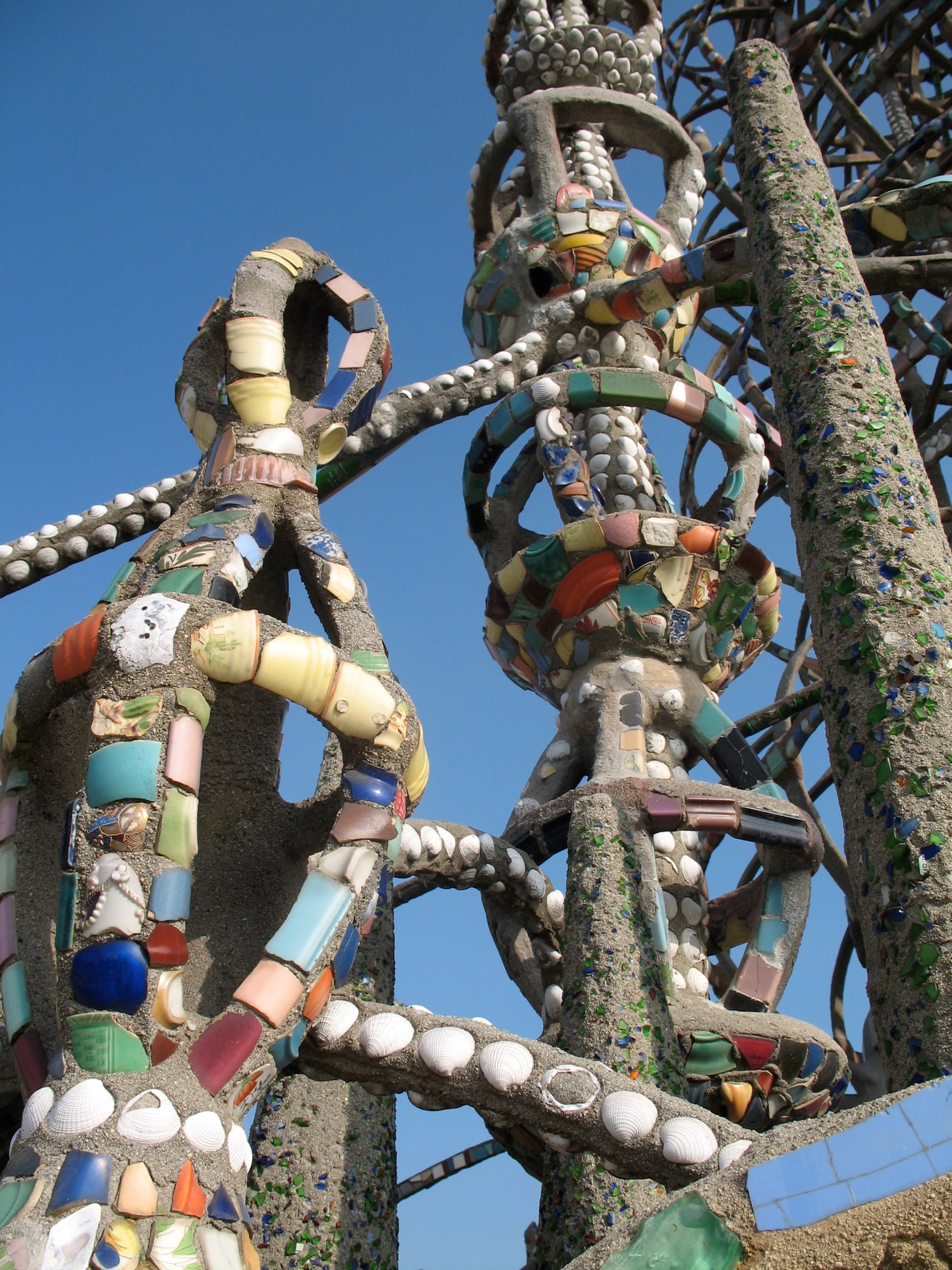
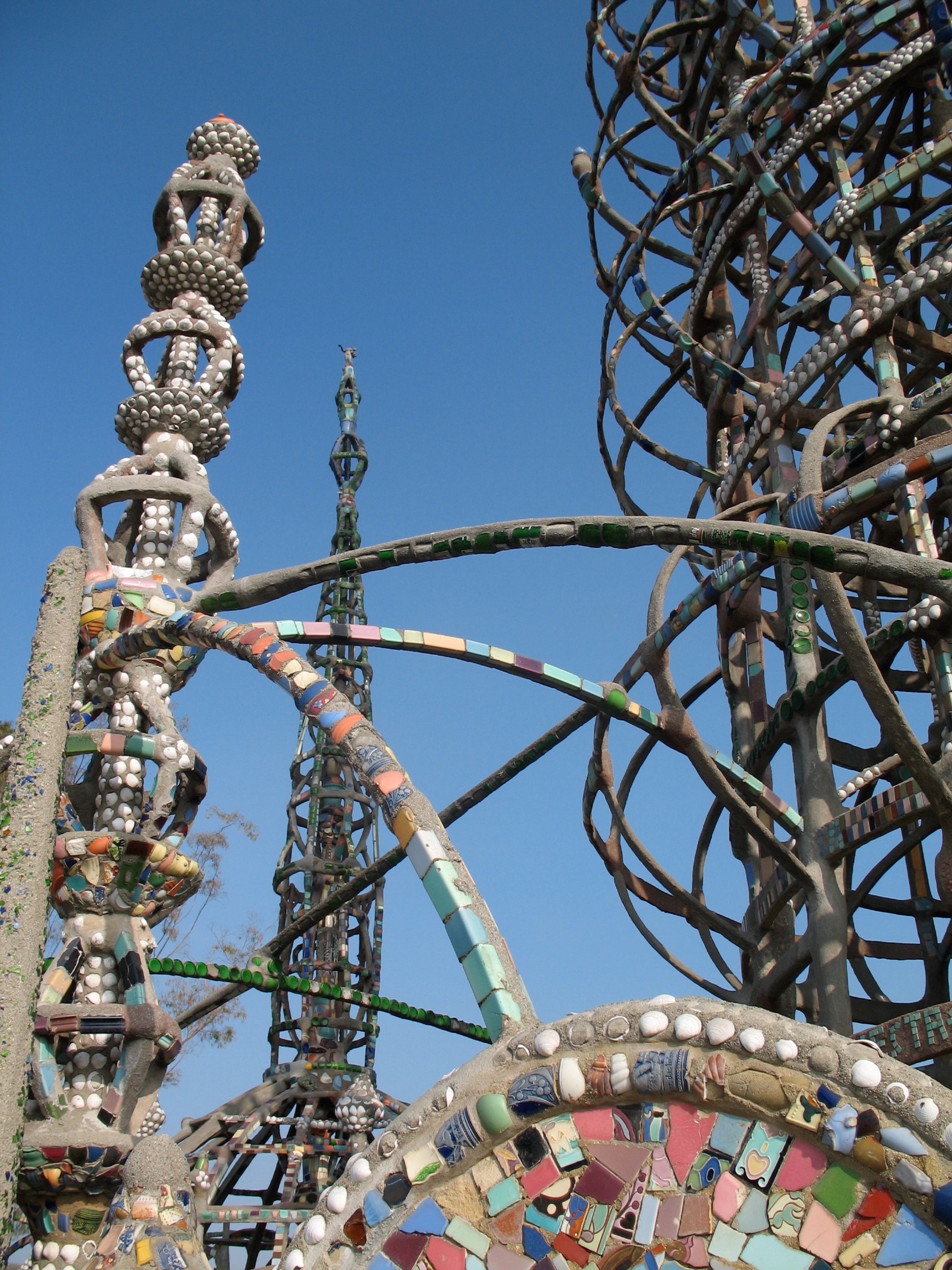

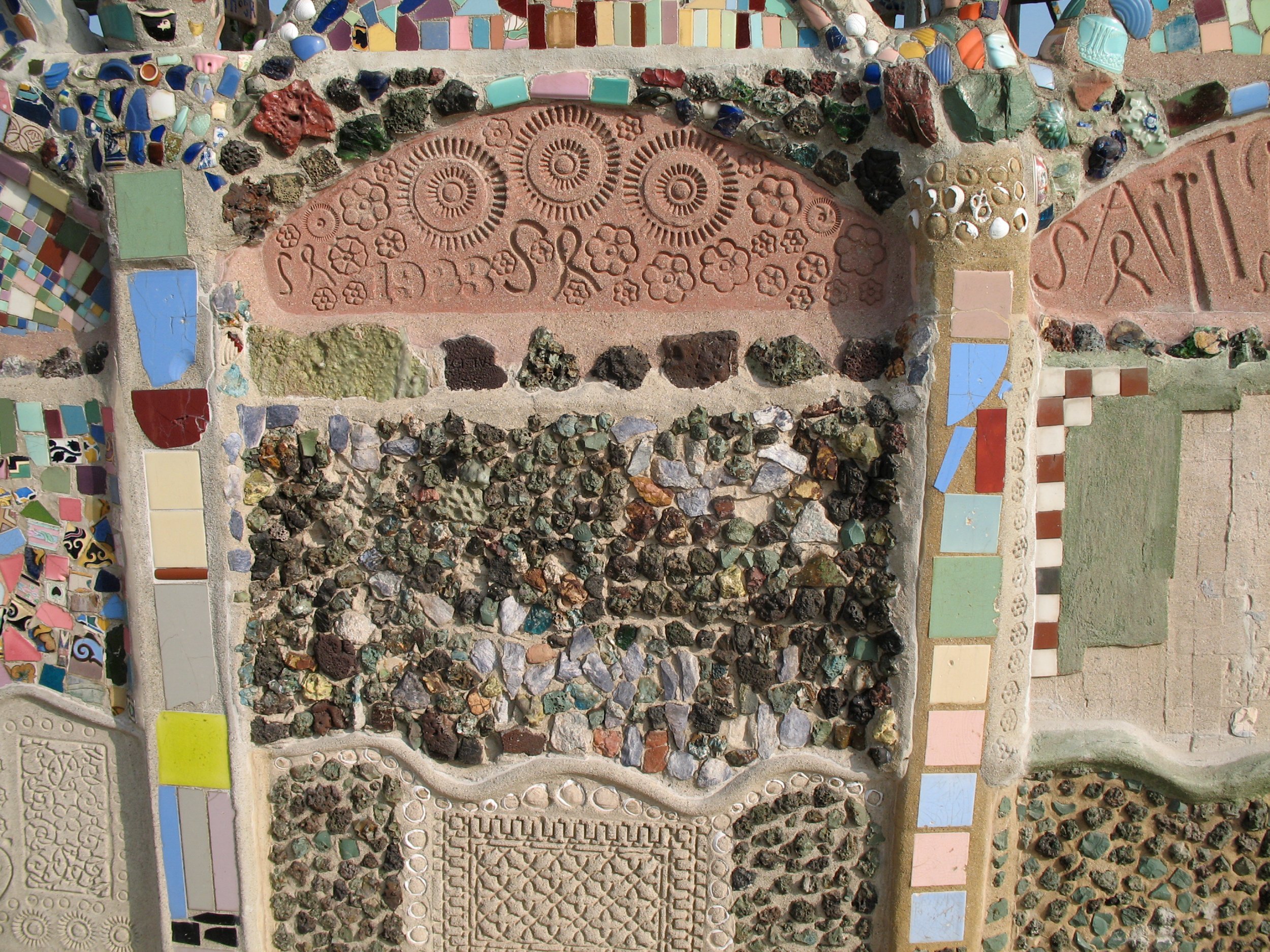
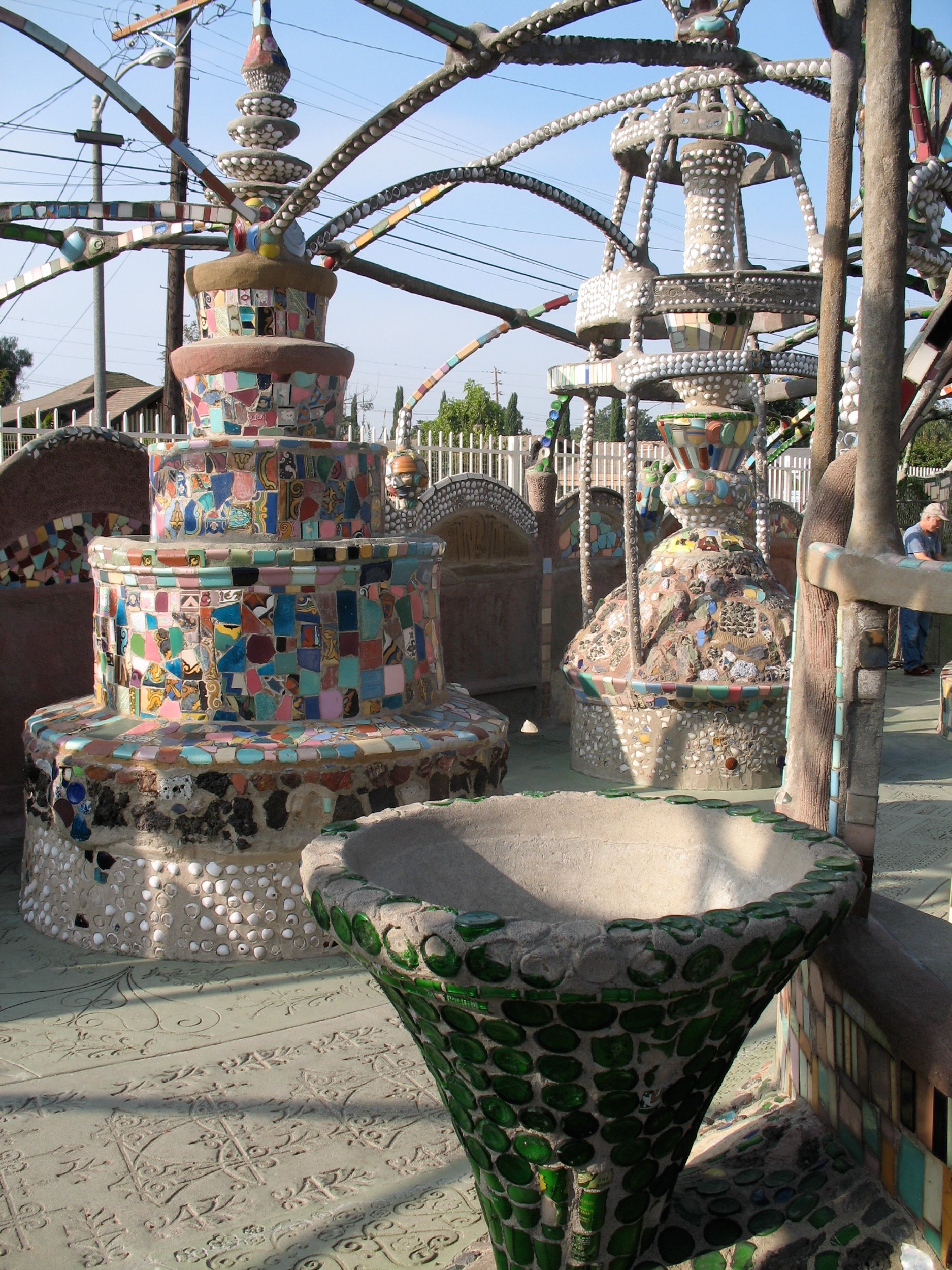
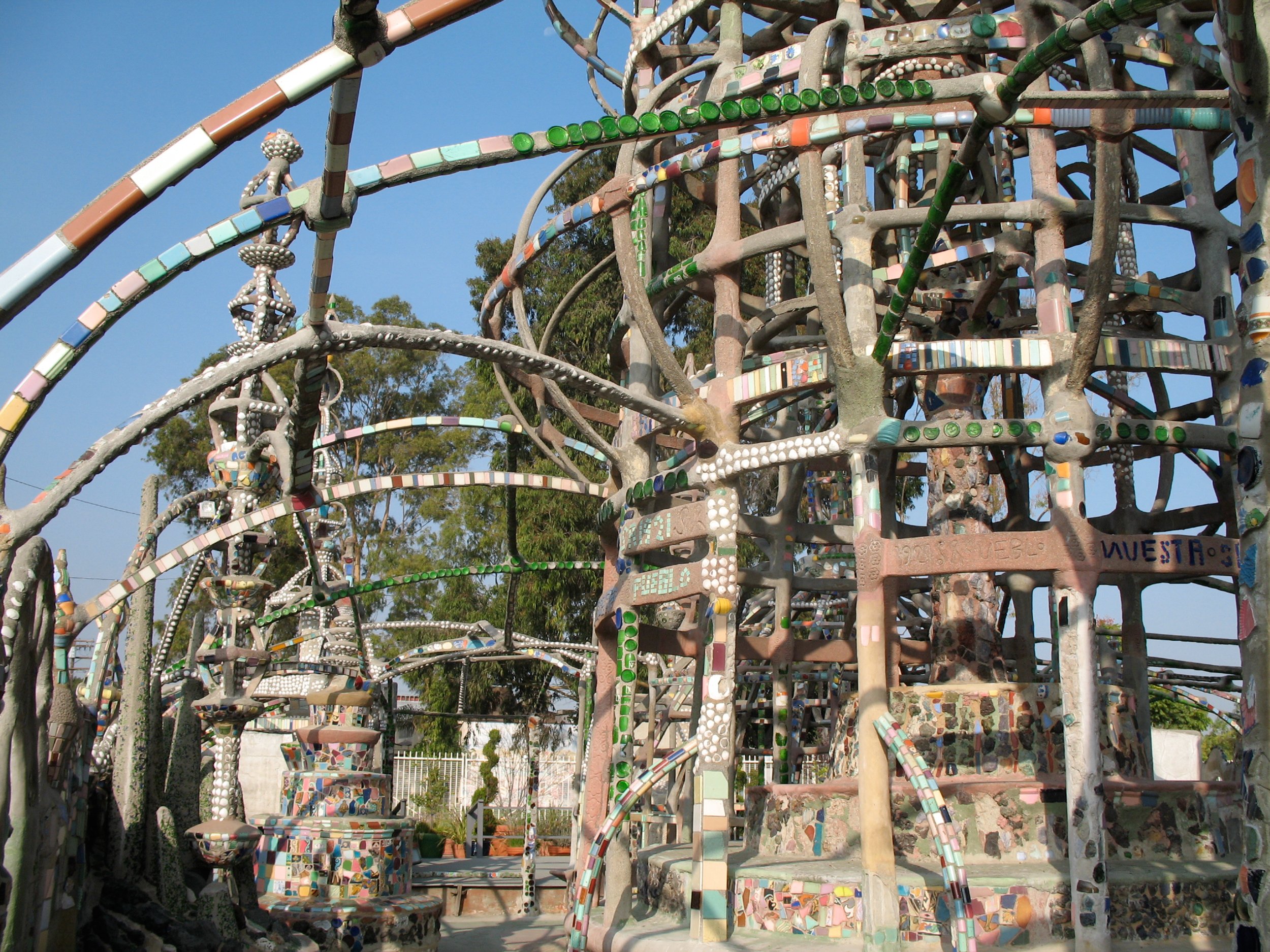
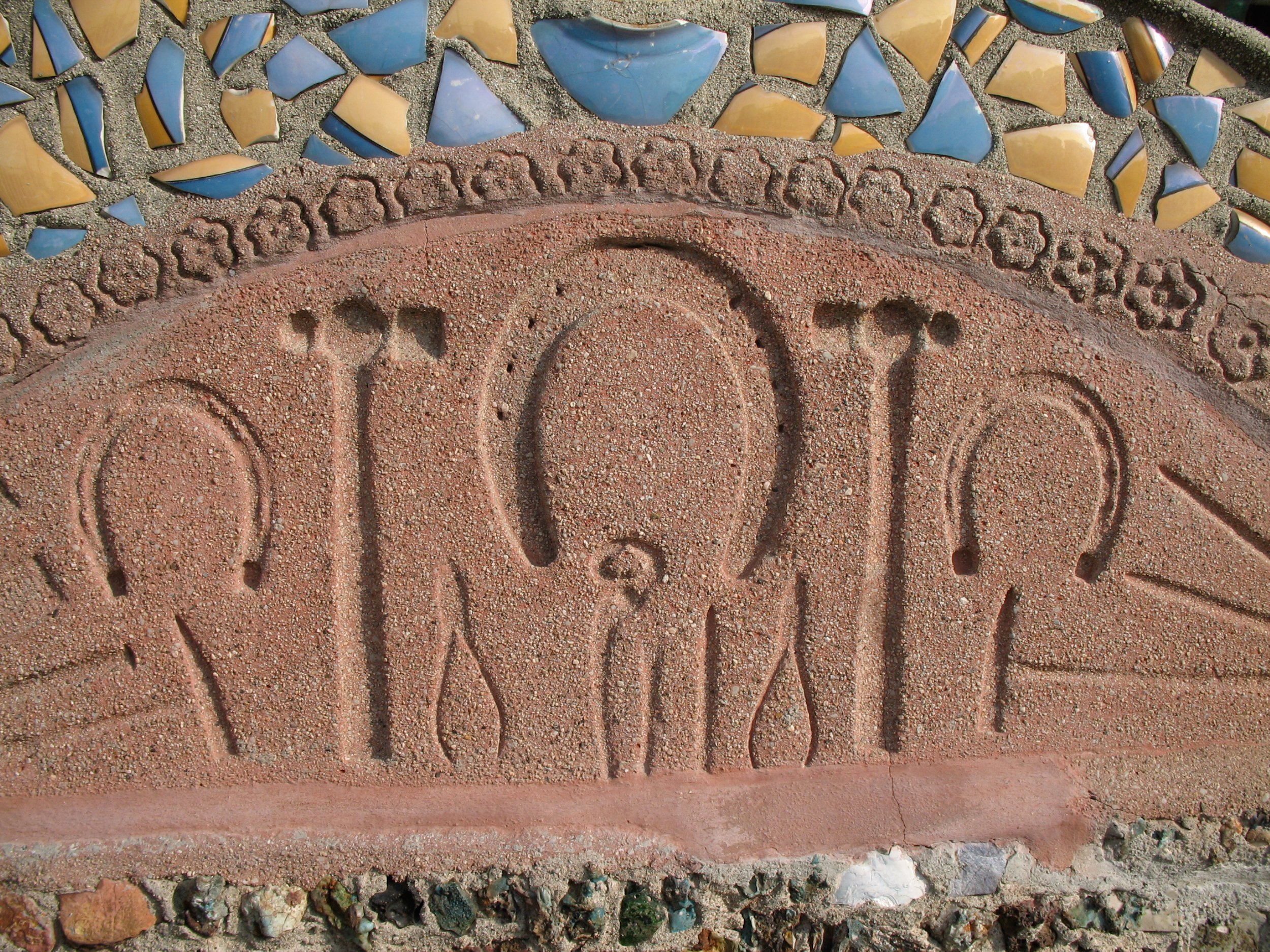
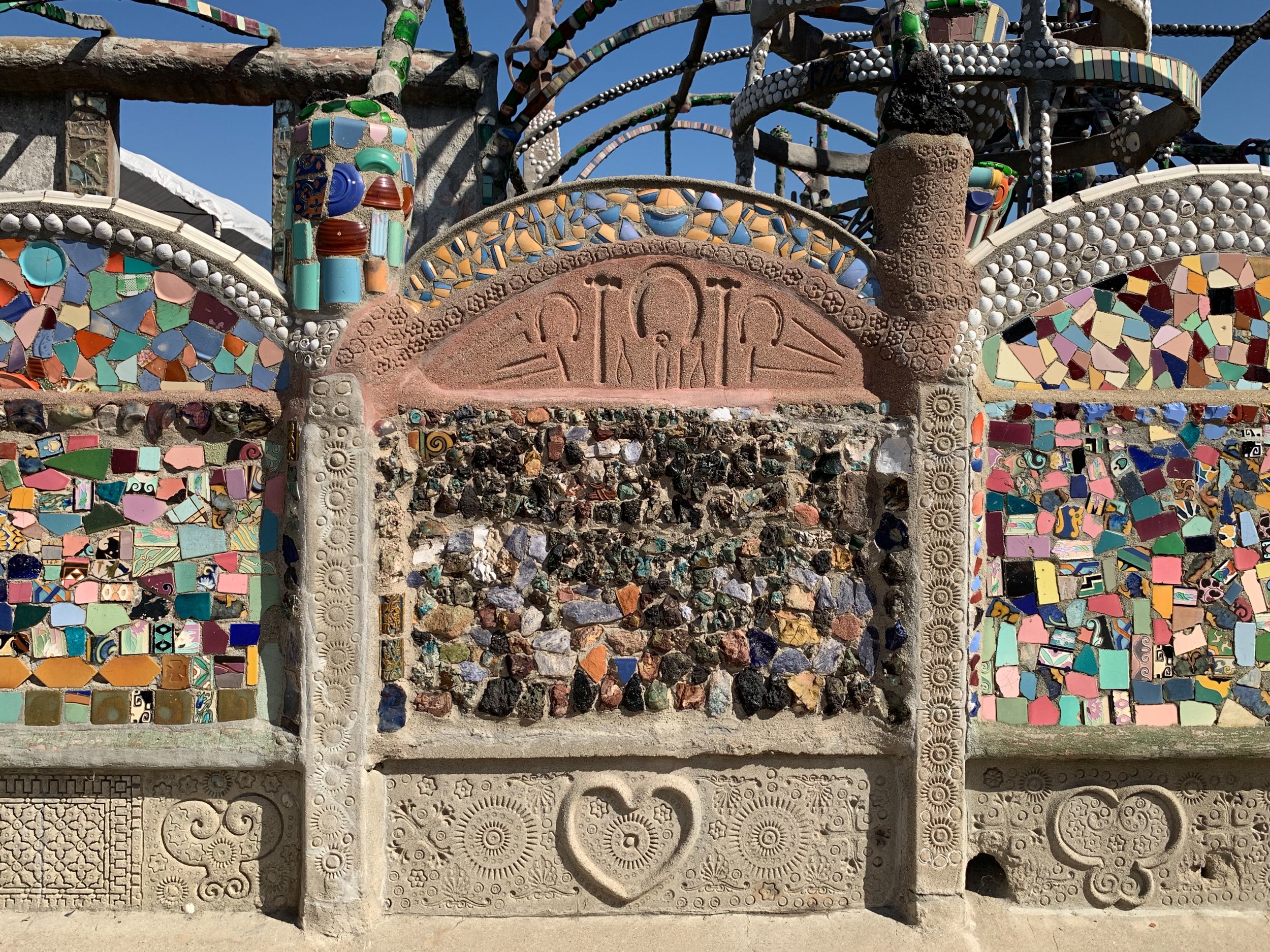
Tower builder Simon Rodia was an Italian immigrant, a laborer who worked on mansions being built in Malibu. In his own small yard near the train tracks in Watts, he spent 30 years building "something big" as he referred to the towers.
Was it inspired by his childhood memories? There's definitely some pieces that evoke the church and his native country, and even the wall around the spires is shaped like a boat. There's incredible grace and lyricism up close that tends to be overlooked when you see the towers from afar. Each part of the structure is ornate in itself, and thanks to aggressive preservation efforts, still standing strong today. It is theorized that Simon Rodia built the Watts Towers to share something he knew as a boy in Nola, Italy ... the Giglio Towers which were paraded through the streets in celebration of the Feast of San Paolino (aka Giglio Festival of St. Paulinus). The shape of the the land that the towers stand on is in the shape of a boat, and he had completed 7 of the 8 towers before he left.
Two things that amuse me — among the neighborhood kids who'd bring broken glass to Simon, the jazz great-to-be, Charles Mingus. And he was featured on the Beatles’ album, Sergeant Pepper’s Lonely Hearts Club Band.
From Wikipedia
https://en.wikipedia.org/wiki/Watts_Towers
The Watts Towers, Towers of Simon Rodia, or Nuestro Pueblo ("our town" in Spanish) are a collection of 17 interconnected sculptural towers, architectural structures, and individual sculptural features and mosaics within the site of the artist's original residential property in Watts, Los Angeles. The entire site of towers, structures, sculptures, pavement and walls were designed and built solely by Sabato ("Simon" or "Sam") Rodia (1879 or 1886 to 1965), an Italian immigrant construction worker and tile mason, over a period of 33 years from 1921 to 1954. The tallest of the towers is 99.5 feet. The work is an example of outsider art (or Art Brut) and Italian-American naïve art.
The Watts Towers were designated a National Historic Landmark and a California Historical Landmark in 1990. They are also a Los Angeles Historic-Cultural Monument, and one of nine folk art sites listed in the National Register of Historic Places in Los Angeles. The Watts Towers of Simon Rodia State Historic Park encompasses the Watts Towers site.
Simon Rodia
Sabato ("Simon" or "Sam") Rodia (February 12, 1879 (?) – July 17, 1965) was born and raised in Serino, Italy. In 1895, aged fifteen, he emigrated to the United States with his brother. Rodia lived in Pennsylvania until his brother died in a mining incident. He then moved to Seattle, Washington, where he married Lucia Ucci in 1902. They soon moved to Oakland, where Rodia's three children were born. Following his divorce around 1909, he moved to Long Beach and worked at odd jobs before finally settling in Watts in 1920. Rodia began constructing the Watts Towers in 1921.
There has been some question as to what Rodia was called during his lifetime; some sources have cited that his birth name was "Sabatino" and it is disputed as to if he was called "Simon" during his lifetime. It is widely known and accepted that he was referred to as "Sam" by close friends. He appears as Samuel Rodia (and still living in Oakland) in the 1910 U.S. Census, but by the time of the 1920 U.S. Census, he had already become Sam Rodia. His surname has also been misspelled as "Rodella" or "Rodilla".
He appears on the iconic cover of the Sgt. Pepper's Lonely Hearts Club album by The Beatles (top right corner, to the left of and behind Bob Dylan).
Design and construction
The sculptures' armatures are constructed from steel rebar and Rodia's own concoction of a type of concrete, wrapped with wire mesh. The main supports are embedded with pieces of porcelain, tile, and glass. They are decorated with found objects, including bottles, ceramic tiles, seashells, figurines, mirrors, and much more. Rodia called the Towers "Nuestro Pueblo" ("our town" in Spanish). He built them with no special equipment or predetermined design, working alone with hand tools. Neighborhood children brought pieces of broken pottery to Rodia, and he also used damaged pieces from Malibu Potteries and CALCO (California Clay Products Company). Green glass includes recognizable soft drink bottles from the 1930s through 1950s, some still bearing the former logos of 7 Up, Squirt, Bubble Up, and Canada Dry; blue glass appears to be from milk of magnesia bottles.
Rodia bent much of the Towers' framework from scrap rebar, using nearby railroad tracks as a makeshift vise. Other items came from alongside the Pacific Electric Railway right-of-way between Watts and Wilmington. Rodia often walked the right-of-way all the way to Wilmington in search of material, a distance of nearly 20 miles.
In the summer of 1954, Rodia suffered a mild stroke. Shortly after the stroke, he fell off a tower from a low height. In 1955, Rodia gave his property to a neighbor and left, reportedly tired of battling with the City of Los Angeles for permits, and because he understood the possible consequences of his aging and being alone. He also mentioned that the towers were frequently vandalized by neighbors. He moved to Martinez, California, to be with his sister. He remained there for the next eleven years until his death in 1965.
Preservation after Rodia
Rodia's bungalow inside the enclosure burned down as a result of an accident on the Fourth of July 1956,[16] and the City of Los Angeles condemned the structure and ordered it all to be destroyed. Actor Nicholas King and film editor William Cartwright visited the site in 1959, and purchased the property from Rodia's neighbor for $2,000 in order to preserve it. The City's decision to pursue expediting the demolition was still in force. The towers had already become famous and there was opposition from around the world. King, Cartwright, architects, artists, enthusiasts, academics, and community activists formed the Committee for Simon Rodia's Towers in Watts. The Committee negotiated with the city to allow for Bud Goldstein to perform an engineering test to establish the safety of the structures and avoid their demolition.
Tests conducted October 10, 1959, found that the towers were capable of withstanding lateral forces of up to 10,000 lbs.
Conservation and damage
The Committee for Simon Rodia's Towers preserved the site independently until 1975 when, for the purpose of guardianship, they partnered with the City of Los Angeles and then with the State of California in 1978. The Towers are operated by the City of Los Angeles Cultural Affairs Department and curated by the Watts Towers Arts Center/Charles Mingus Youth Arts Center, which grew out of the Youth Arts Classes established in the house structure more than 50 years ago.
In February 2011, the Los Angeles County Museum of Art received a grant from the James Irvine Foundation to scientifically assess and report on the condition of the Watts Towers, to continue to preserve the undisturbed structural integrity and composition of the aging works of art. Weather and moisture caused pieces of tile and glass to become loose on the towers, which are conserved for reattachment in the ongoing restoration work. The structures suffered little from the 1994 Northridge earthquake in the region, with only a few pieces shaken loose. An extensive three-year restoration project by the Los Angeles County Museum of Art began in 2017 and suspends public tours within the site (tours outside of the fenced towers and sculptures are still available).
California Historic Landmark Marker on the site reads:
NO. 993 WATTS TOWERS OF SIMON RODIA – The Watts Towers are perhaps the nation's best known work of folk art sculpture. Using simple hand tools, cast off materials (glass, shell, pottery pieces and broken tile) Italian immigrant Simon Rodia spent 30 years building a tribute to his adopted country and a monument to the spirit of individuals who make their dreams tangible. Rodia's Towers inspired many to rally and preserve his work and protect it for the future.
Creator: Sabato (Simon) Rodia: 1879–1965
Creation date: 1921-1955
1765 East 107th St
Los Angeles, CA
-
"Detour Art—Outsider, Folk Art, and Visionary Folk Art Environments Coast to Coast, Art and Photographs from the Collection of Kelly Ludwig" by Kelly Ludwig, Kansas City Star Books, 2007.
"Rare Visions and Roadside Revelations, "Cali-Zona, Here We Come," KCPT, Kansas City Public Television, 2007.
"Museum of American Folk Art Encyclopedia of Twentieth Century American Folk Art and Artists" by Chuck and Jan Rosenak, Abbeville Press, New York, 1990.
"20th Century American Folk, Self Taught, and Outsider Art" by Betty-Carol Sellen, Cynthia J. Johnson, Neal-Schuman Publishers, New York, 1993.
"Self-Made Worlds: Visionary Environments" by Roger Manley and Mark Sloan, Aperture, New York, 1997.
"Sublime Spaces & Visionary Worlds: Built Environments of Vernacular Artists," by Leslie Umberger, Erika Doss, Ruth DeYoung Kohler, Lisa Stone, and Jane Bianco, published by John Michael Kohler Arts Center and Princeton Architectural Press, 2007.
"Self Taught, Outsider, and Folk Art—A guide to American Artists, Locations and Resources" by Betty-Carol Sellen with Cynthia J. Johnson, McFarland & Company, 2000.
"Contemporary American Folk Art - A Collector's Guide" Chuck and Jan Rosenak, Abbeville Press, 1996. "Raw Creation: Outsider Art and Beyond" by John Maizels, 1996.
"American Self-Taught Art: An Illustrated Analysis of 20th Century Artists and Trends with 1,319 Capsule Biographies" by Florence Laffal and Julius Laffal, 2003.
"Rare Visions and Roadside Revelations Coast to Coast Travel-o-Pedia" by Randy Mason, et. al., Kansas City Star Books, 2009.
Kelley, Jeff. "The Story of the Watts Towers." University of California Press, 2011.
Saverio, Nancy. “The Watts Towers of Los Angeles: The Artist, the Architect and the Story.” Arcadia Publishing, 2009.
Hansen, Eric. "The Watts Towers." National Geographic, vol. 217, no. 4, April 2010, pp. 104-117.
Watts Towers Arts Center. http://wattstowers.org/index.html
The Simon Rodia Watts Towers. http://www.simonrodiatower.org/index.html
The Watts Towers. http://www.wattstowers.org/